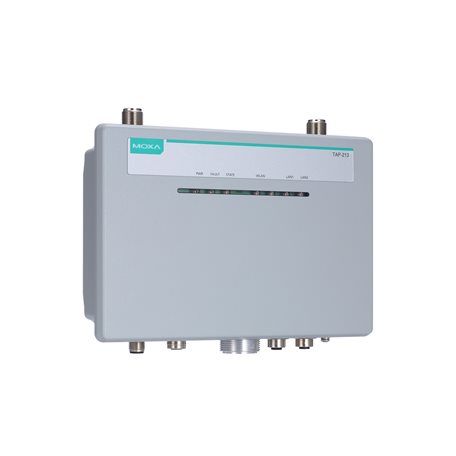
Click “WhatsApp Us” or “Get a Quote” above to buy TAP-213 from APulsar Technologies, MOXA official distributor.
In stock. Purchase walk-in from our office in Petaling Jaya, or order online and enjoy fast delivery across Kuala Lumpur and the entire Malaysia.
The TAP-213 outdoor wireless AP/client is the ideal ruggedized wireless solution for railway onboard and train-to-ground applications such as CCTV and CBTC communications. The TAP-213’s dust-tight, weatherproof design is IP68-rated, allowing you to extend wireless networks to outdoor locations and critical environments. The two redundant DC power inputs increase the reliability of the power supply and the device can also be powered via PoE for easier deployment. The TAP-213 is compliant with the mandatory test items of the EN 50155 standard to ensure suitability for rolling stock applications. With many hardened industrial-grade features, the TAP-213 will provide stable and reliable wireless connectivity, especially for rail onboard environments.
Note: Due to a limitation in the receiver sensitivity performance for channels 153 and 161, it is recommended to avoid using these channels in your critical applications.
Note: Due to a limitation in the receiver sensitivity performance for channels 153 and 161, it is recommended to avoid using these channels in your critical applications.
Apulsar.com uses cookies to ensure you get the best experience. By continuing to browse, you agree to our use of cookies. Our privacy policy available here